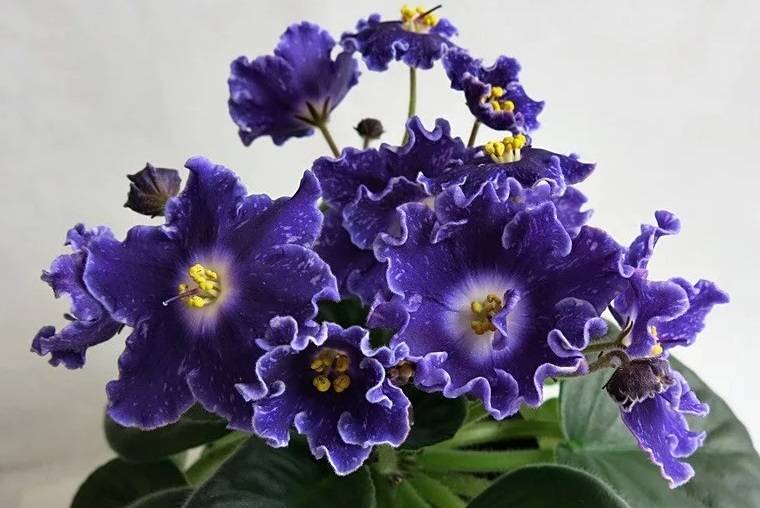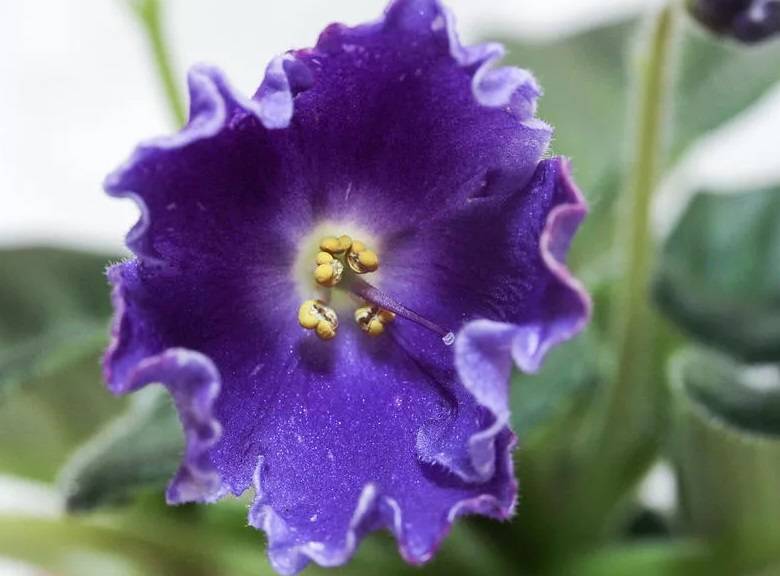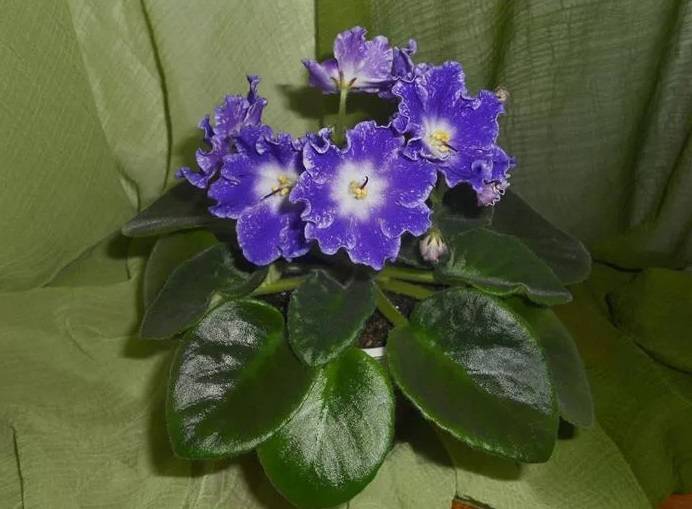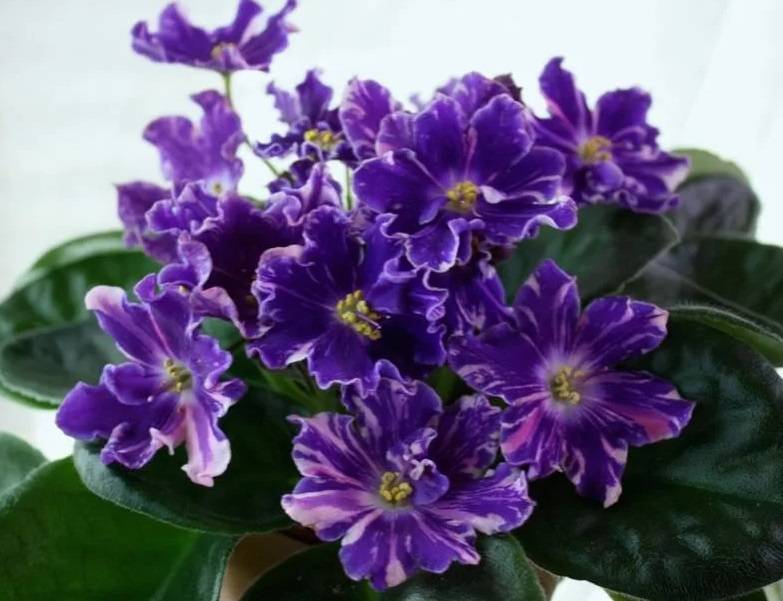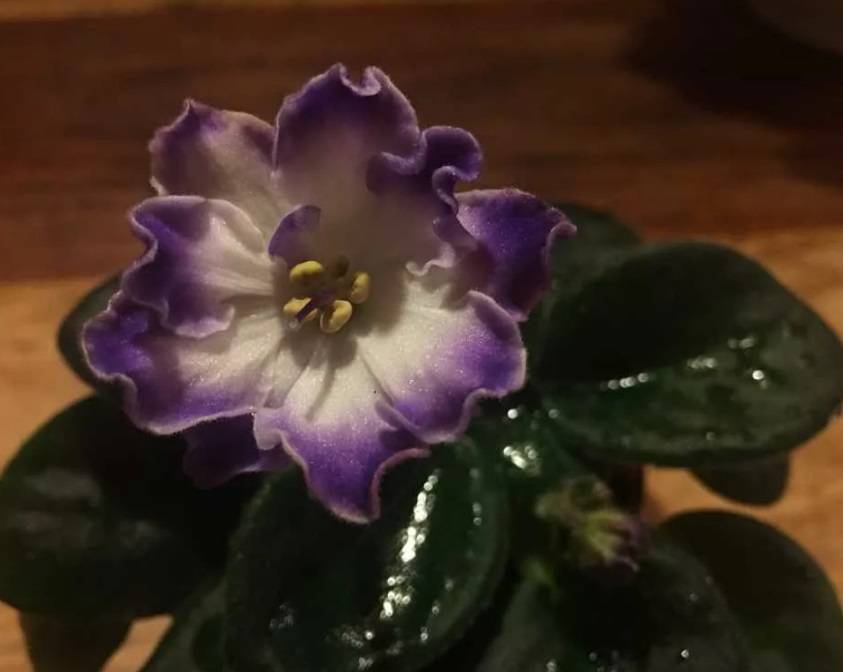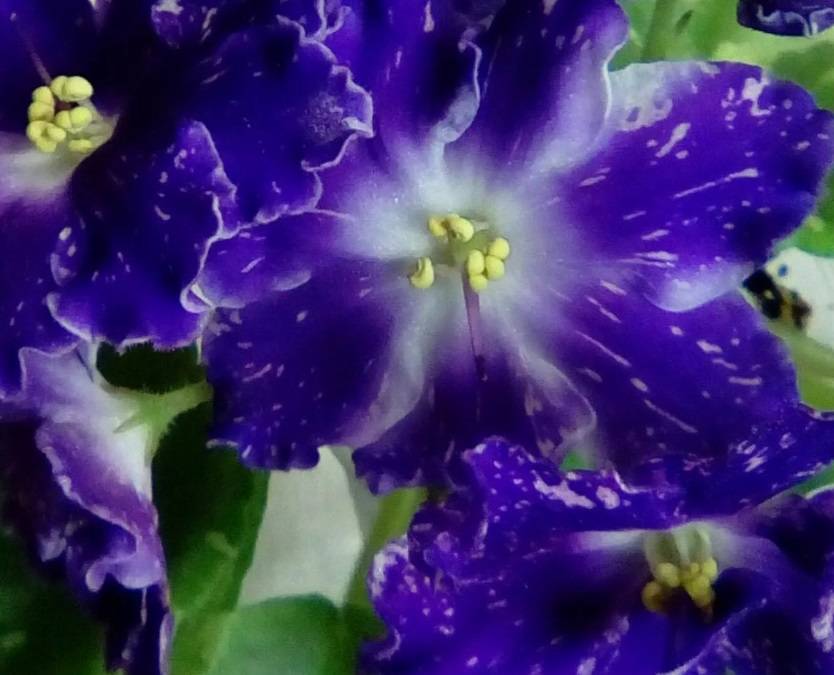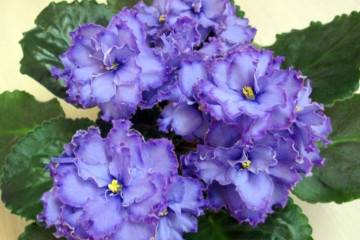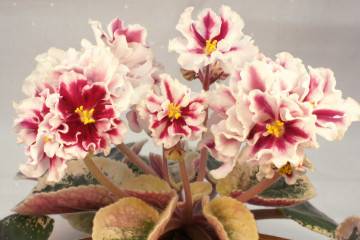Violet Shining bell - description and characteristics of the variety
Content:
Violet Shining Bell is a luxurious, charming blue flower that is a favorite houseplant of many housewives. Despite the fact that this variety was bred not so long ago, many have already purchased it as a decor for their home or office. This article will help you familiarize yourself with the main characteristics and features of the Violet Shining Bell.
What does the violet Shining bell look like: description
Violets of standard size have bright blue or purple petals (up to 6 cm), symbolizing wisdom and spiritual fulfillment. It is believed that love, peace and comfort reign in a house with violets. Blue bells, which attract special attention, have a shining eye, petals with wavy edges. The flowers are quite large and tall.
Plant characteristics
Delicate violet has a neat proportional rosette and curly edges. An important advantage is that it blooms all year round with a short pause for several months.
The plant blooms in a half-hidden state, but after a certain time the petals open shortly before they fade.
Violet has from 2 to 10 peduncles that grow vertically, buds at their ends. The leaves of a pleasant green color do not have a relief.
The shining bell belongs to the Violet family. It is a herbaceous plant. To date, more than 700 species are represented. Most of their reproduction takes place in the Northern Hemisphere, where a temperate climate prevails. The most common plants are found in the countries of North America, Brazil, Australia and Japan.
The variety of this plant was registered relatively recently by the breeder E. Enikeeva. This event took place in 2014.
What is sport for Saintpaulia Chimeras
Chimeras include varietal violets that have stripes in the center of each petal. Sometimes the Radiant Bell has splashes or streaks along the edges. There are various types of varieties in which blotches can be darker or lighter in color.
There is a variegated chimera that looks even more impressive thanks to its bright leaves, which only emphasize the beauty of the inflorescences.
Violet never gets pollinated, it just gives sport (it blooms with sport). Saintpaulias are prone to mutation, and their developmental history is marked by many colorful examples. Quite often, a spontaneous mutation occurs, that is, it occurs spontaneously under normal environmental conditions.
The flowers of leaf chimeras are ordinary, without a contrasting stripe in the center of the petal, but with a unique pattern on the leaves. There are only a few such chimeras in the world, and their cultivation is not easy, but exciting.There is little chlorophyll in their leaves, they themselves are small in size, the rosettes grow very slowly. If you root such a leaf, then a new plant with ordinary green leaves without a pattern will turn out from it.
Features of the DS violet care Shining bell
Proper care is very important for proper plant growth and development. It consists of the following activities:
- timely watering;
- fertilization of the soil;
- lighting;
- compliance with the required temperature;
- protection from disease.
Temperature
Normal flower growth is ensured at an optimum temperature of up to 22 ° C.
Lighting
A flower like the Violet Shining Bell grows quite well in diffused light. Direct sunlight can lead to the death of the flower, because under the influence of ultraviolet rays, the plant burns. In insufficient light, the plant will lose its attractive appearance and will no longer bloom. Therefore, it will be necessary to provide artificial lighting with a lamp at a height of up to 20 cm.
Watering
To water a violet, you need settled water. Watering should be carried out through a special tray to avoid moisture getting on the petals.
Spraying
For violets, moisture levels play an important role. Therefore, spraying is not suitable for this flower. Perfect watering is ensured through the drip tray.
Humidity
Provide humidified air. If there is low humidity, then this negatively affects the growth of flowers. Because of this, specialists usually create humid greenhouse conditions in order to ensure the rapid growth of the plant, for example, put a humidifier next to it.
Priming
In order for the flower to develop normally, a soil with an optimal acidity index of up to 6.8 Ph should be used. At low rates, plant death can occur. It is best to choose sandy loam soil.
Top dressing
In summer, the plant can be fed 2 times a month. It is necessary to regularly apply organic matter and mineral fertilizers. If the flower is grown in humid greenhouse conditions, then this process should be carried out several times throughout the year.
When and how it blooms
Violets can bloom almost all year round. They rest about 1.5-2 months a year, and bloom the rest of the time. The main thing is to organize favorable conditions for them. This period falls from March to December.
Types of flowers
Violet flowers are divided into:
- Pansy - classic shape: the two upper petals are smaller than the side and lower ones;
- Star (Star) - all petals are of the same size and are evenly spaced around the circumference of the flower. It resembles a star, as the petals are often pointed;
- Bell (Bell) - the fused petals at the base of the flower do not allow it to fully open, thereby forming an interesting shape. Among hybrid Saintpaulias, the semi-bell form is more common;
- Wasp (Wasp) - narrow petals are often rolled into a tube at the base. This form of flowers is more common in Saintpaulias mini, semi-mini and trailers, less often in standards;
- Spider - narrow elongated petals, as it were, cover the hemisphere of the corolla;
- Cup-shaped type - the petals are not fused, as in the bell-shaped form, but even in complete dissolution, the petals of the violet flower form a cup.
Flower shapes
Most varieties of violets with the shape of a bell flower are mini and semi-mini, less often - standards. Often varieties of violets with such a flower shape are characterized by bustle (with stipules) foliage.
Flowering period
If the grower provides favorable conditions, then the plant will bloom all year round.The market sells varieties that bloom quite quickly.
Changes in care during flowering
Each variety of violets has its own terms, it is approximately from 8 months to 1 year. Although, even when planting one variety, the plant may begin to bloom for the first time at different times.
How Violet DS Reproduces Shining Bell
To propagate a flower at home, it is advisable to use the peduncle rooting method. When growing a violet at home DS Shining Bell in this way, you need sharp scissors, with which you need to carefully cut off strong peduncles near the soil. Then the extra flowers must be removed and planted in the ground. The container with the flower should be covered with plastic wrap to create a greenhouse effect.
Transplant after purchase and during reproduction
For the further growth of the plant, it is necessary to repot it periodically, since over time the soil is depleted, the acidity index changes, and the soil is compacted. All these signs can negatively affect the condition of the plant and interfere with normal air exchange.
Possible growing problems
If the violet bell does not grow at home, then this may be due to improper care. Therefore, it is very important to heed the advice of flower growers.
Leaf problems
Signs of disease often appear on the leaves and petals of violets. When infected with ticks, the leaves curl up and take on a dusty appearance. Chemicals and proper watering will help to solve the problem.
Pests
The plant is often affected by pests. For example, to combat ticks, it is advisable to use acarin, fitoverm. In case of damage by worms, you should use an aktar, aktellik.
Diseases
If the violet Shining Bell grows in unfavorable conditions, then there is a possibility of the appearance of a disease. The most common ailment is fusarium. For the purpose of prevention, experts recommend using a foundationol solution.
Signs of improper care
Improper care can be identified by the process of flower development. If the violet does not bloom, then you need to change the pot, change the place, moisten or dry the soil, inspect the plant (whether the petals are damaged by pests).
Growing a flower at home will help you find harmony and tranquility. Violet The shining bell is very suitable for this. She is picky about care and blooms all year round.
